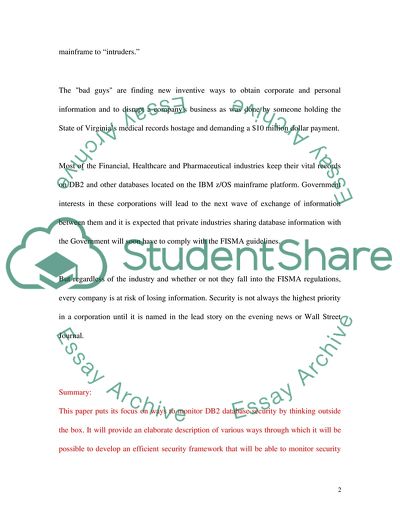Cite this document
(“Thinking Outside the Box when Monitoring DB2 Security on z/OS Essay”, n.d.)
Thinking Outside the Box when Monitoring DB2 Security on z/OS Essay. Retrieved from https://studentshare.org/miscellaneous/1555345-thinking-outside-the-box-when-monitoring-db2-security-on-zos
Thinking Outside the Box when Monitoring DB2 Security on z/OS Essay. Retrieved from https://studentshare.org/miscellaneous/1555345-thinking-outside-the-box-when-monitoring-db2-security-on-zos
(Thinking Outside the Box When Monitoring DB2 Security on z/OS Essay)
Thinking Outside the Box When Monitoring DB2 Security on z/OS Essay. https://studentshare.org/miscellaneous/1555345-thinking-outside-the-box-when-monitoring-db2-security-on-zos.
Thinking Outside the Box When Monitoring DB2 Security on z/OS Essay. https://studentshare.org/miscellaneous/1555345-thinking-outside-the-box-when-monitoring-db2-security-on-zos.
“Thinking Outside the Box When Monitoring DB2 Security on z/OS Essay”, n.d. https://studentshare.org/miscellaneous/1555345-thinking-outside-the-box-when-monitoring-db2-security-on-zos.


